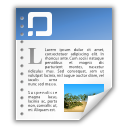| dc.contributor.author | Matthews, Allison | |
| dc.date.accessioned | 2010-08-13T21:12:50Z | |
| dc.date.available | 2010-08-13T21:12:50Z | |
| dc.date.issued | 2010-06-14 | |
| dc.identifier.uri | http://hdl.handle.net/1803/4208 | |
| dc.description | Teaching and Learning Department capstone project | en_US |
| dc.description.abstract | This paper provides the rationale underlying the integrated reading-history unit I have created in fulfillment of my Capstone requirements. I begin by calling for the incorporation of any of the content areas into the literacy program, drawing primarily from schema theory. Then, I explain why history is a particularly apt candidate for this sort of cross-disciplinary study. Next, I highlight the key features of the Concept-Oriented Reading Instruction (CORI) model (Guthrie, Wigfield, and Perencevich, 2004), the inspiration for my unit plan, and describe how I adapted it to fit my purposes. Finally, I describe three instructional principles that guided the design of my unit: clear purpose, constructive assessment, and authentic inquiry. Contains two major components: an essay providing a research-based rationale for the integration of reading and history, and a unit plan that demonstrates how that integration might occur. | en_US |
| dc.language.iso | en_US | en_US |
| dc.publisher | Vanderbilt University. Peabody College | en_US |
| dc.subject | literacy instruction | en_US |
| dc.subject | cross-curricular integration | en_US |
| dc.subject | schema theory | en_US |
| dc.subject.lcsh | History -- Study and teaching (Elementary) | en_US |
| dc.subject.lcsh | Reading (Elementary) -- Study and teaching | en_US |
| dc.title | Promoting Literacy through the Integration of Reading and History | en_US |
| dc.type | Thesis | en_US |
| dc.description.college | Peabody College of Education and Human Development | en_US |
| dc.description.department | Department of Teaching and Learning | en_US |

